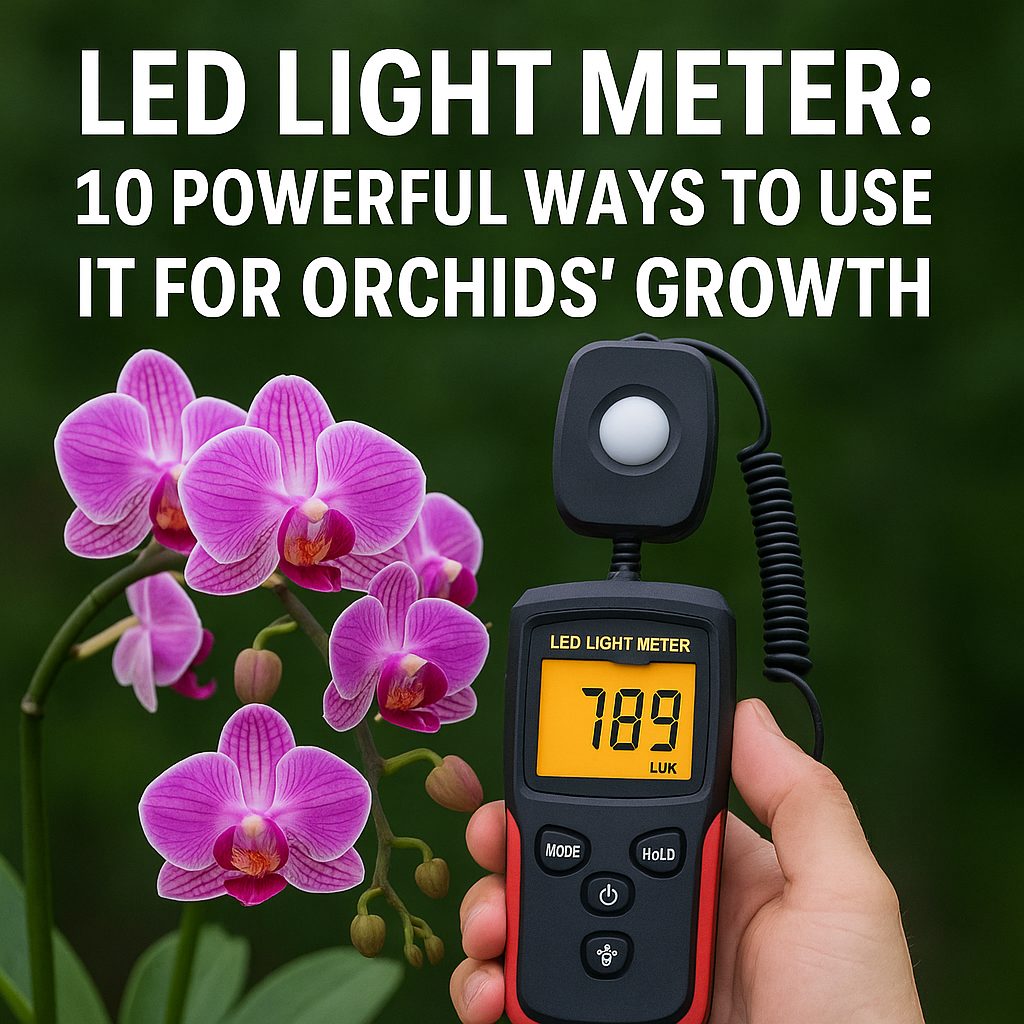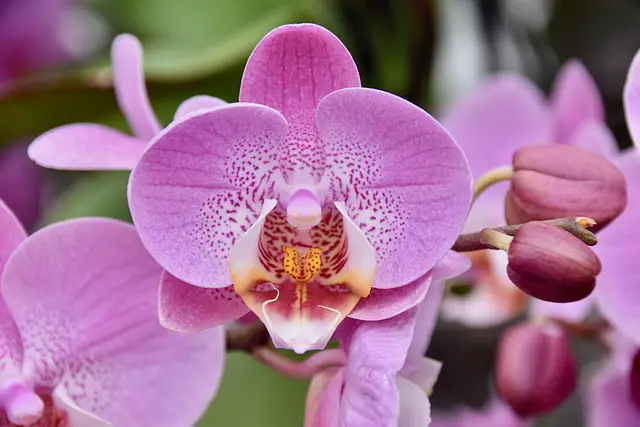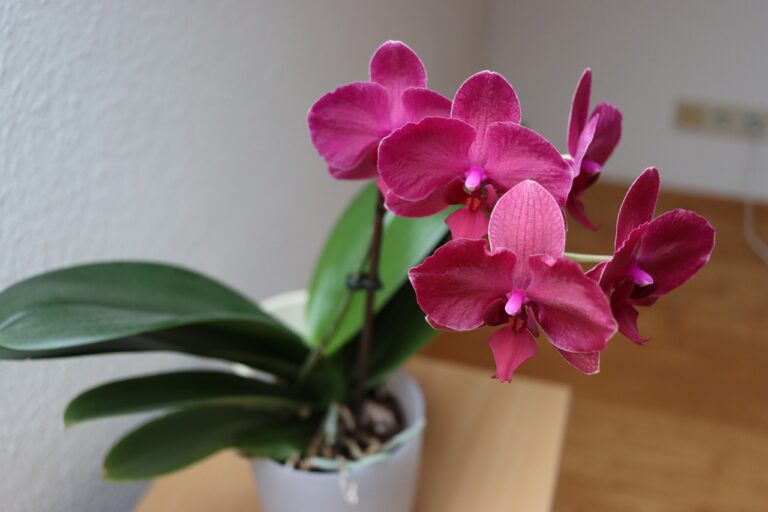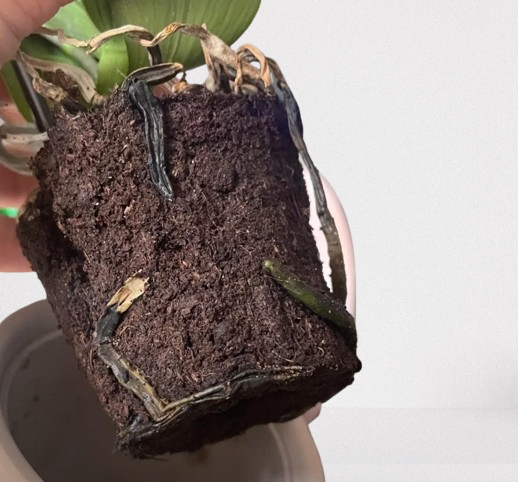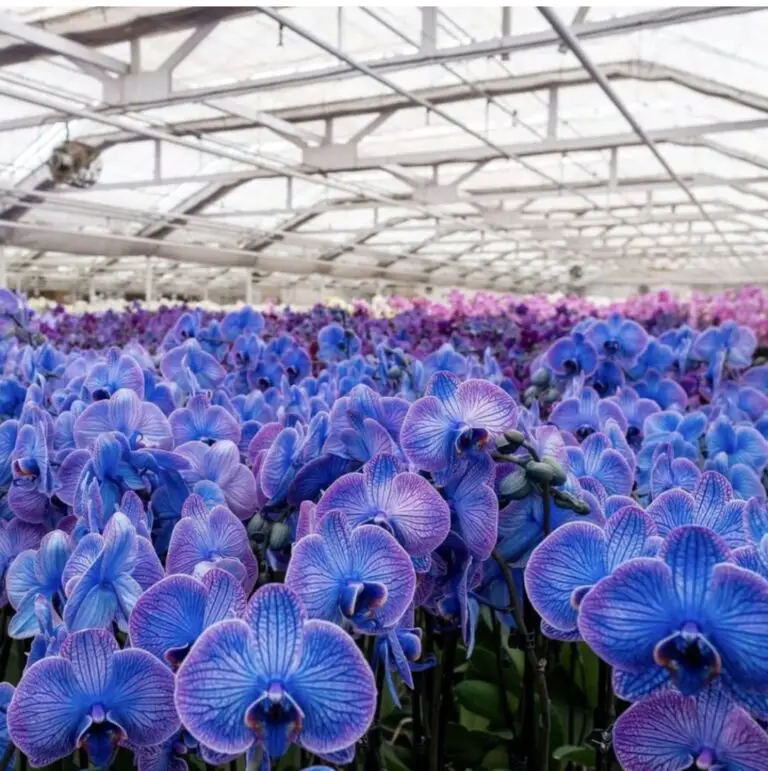If you’re passionate about growing orchids, then mastering light exposure is one of the most important steps you can take—and an LED light meter is the secret tool that can take your orchid care to the next level. Whether you’re a beginner looking to improve your plant’s health or a seasoned grower aiming for more blooms, understanding and controlling light is the key to success.
Many orchid enthusiasts underestimate the role of proper lighting, focusing instead on watering and feeding. But light is the fuel behind photosynthesis, blooming, and growth. Without the right intensity and duration of light, even the best cared-for orchids can fail to flower or begin to deteriorate.An LED light metre is really useful in this situation.
Unlike human eyesight, which can’t accurately gauge brightness or light quality, a light meter provides precise, data-driven measurements. It tells you exactly how much usable light your orchids are receiving throughout the day—no more guesswork, no more trial-and-error. This small, affordable device can help you fine-tune your growing setup, whether you’re using natural sunlight, grow lights, or a combination of both.
In this guide, we’ll explore 10 powerful ways to use an LED light meter to boost your orchid’s growth, flowering, and overall health. These practical tips will help you make smarter choices about placement, lighting schedules, and even the types of orchids you can grow successfully in your space. Let’s dive in and transform your orchid-growing experience—starting with the power of perfect light.

- 1 1 . Calculate the Orchids’ Daily Light Integral (DLI)
- 2 2. Determine the Ideal Placement for Your Orchids
- 3 3. Identify Light Gaps During Seasonal Changes
- 4 4. Prevent Light Stress in Sensitive Orchid Species
- 5 5. Optimize Artificial LED Light Settings
- 6 6. Improve Growth in Low-Light Environments
- 7 7. Monitor Light Conditions in Terrariums or Grow Tents
- 8 8. Track Light Exposure for Multiple Orchid Types
- 9 9. Enhance Blooming Cycles with Consistent Light Levels
- 10 10. Evaluate LED Light Efficiency Over Time
- 11 Bonus Tip: Choose the Right Light Meter for Orchids
- 12 FAQS
1 . Calculate the Orchids’ Daily Light Integral (DLI)
The total amount of light a plant receives in a day is referred to as its DLI. The species of orchid determines the DLI requirements. For example, Phalaenopsis orchids need about 4–6 mol/m²/day, while Vandas need more, up to 30 mol/m²/day. An LED light meter helps you measure this value and adjust your lighting accordingly.
Knowing the exact DLI helps eliminate trial-and-error. You’ll be able to set timers for your LED grow lights or adjust the curtain position if you’re using natural light. It’s an essential part of creating a stable and productive growing environment.
2. Determine the Ideal Placement for Your Orchids
Not all windows and shelves provide the same light intensity. To discover the ideal area, you can test out various locations with the aid of an LED light metre. You can move the meter around your home or greenhouse and choose areas where the light falls within the ideal range for your specific orchid species.
This prevents weak plants caused by placing orchids too far from light sources. For instance, east-facing windows might work for Oncidiums, while Cattleyas thrive in bright southern exposures. The meter helps confirm you’re putting the right plant in the right place.
3. Identify Light Gaps During Seasonal Changes
Seasons impact sunlight angle and intensity. A spot that worked in spring may be too dim in winter. With an LED light meter, you can identify these seasonal shifts and adjust your orchid placement accordingly. This ensures your orchids get consistent light levels year-round, keeping them active and thriving.
For example, a west-facing window may provide strong afternoon sun in summer, but be too low in winter. The meter reveals when it’s time to supplement with artificial light or relocate your plants temporarily.
4. Prevent Light Stress in Sensitive Orchid Species
Some orchids, like Phalaenopsis, prefer moderate light, while others like Cattleyas need more. Overexposure can cause leaf burns, while low light stunts growth. The LED light meter helps detect when light levels are too high or too low, allowing you to fine-tune conditions and avoid stressing delicate plants.
By taking daily readings, you’ll spot trouble before it starts. If your orchid leaves are turning yellow or developing brown spots, the meter can confirm whether it’s due to excessive light or another issue like watering.
5. Optimize Artificial LED Light Settings
If you grow orchids indoors, you likely use artificial lighting. An LED light meter lets you adjust the light’s brightness and duration to suit your orchids’ needs. This ensures that even in rooms without sunlight, you can recreate the ideal conditions using grow lights effectively and efficiently.
Instead of guessing how many hours your lights should stay on, let the meter guide you. To automate your orchid lighting plan and maintain consistency day after day, pair it with a timer.
6. Improve Growth in Low-Light Environments
Apartments or shaded rooms may not offer enough natural light for orchids. Using an LED light meter, you can measure how much supplemental lighting your orchids require. You can then place LED grow lights accordingly and monitor their effectiveness to make sure your plants grow lush and healthy.
If you’re growing orchids under shelves, in bathrooms, or in hallways, you might be surprised how little light they receive. The meter helps you find and fix these dark zones quickly.
7. Monitor Light Conditions in Terrariums or Grow Tents
Closed environments like terrariums or grow tents can have uneven lighting. In some places, the light may not reach every corner equally.A light meter helps you pinpoint dark areas or hot spots. This ensures each orchid inside receives equal and sufficient light, preventing one from thriving while another struggles.
In small setups, you may need to reposition LED strips or adjust the plant height. The meter makes this easy, so you get balanced growth across the entire setup.
8. Track Light Exposure for Multiple Orchid Types
While some species do well in shadow, others need bright light.With a light meter, you can check and customize the lighting conditions for each plant individually. This personalized approach leads to better results, especially when you’re growing a variety of orchid types together.
For instance, grouping high-light orchids under stronger bulbs while placing low-light orchids in more shaded areas can prevent light stress and improve overall plant health.
9. Enhance Blooming Cycles with Consistent Light Levels
Orchids bloom best under consistent conditions. Fluctuating light levels can disrupt their natural rhythm. By using an LED light meter, you ensure they receive stable light amounts every day. This regular exposure supports healthy bloom cycles and extends the flowering period, giving you longer-lasting, vibrant displays.
For example, a Vanda might refuse to bloom if light is too low. Regularly checking with a meter ensures it’s getting enough intensity daily to trigger flowering.
10. Evaluate LED Light Efficiency Over Time
LEDs don’t stay equally bright forever. Over time, their intensity decreases. An LED light meter helps track this decline. You can use it to detect when your lights are underperforming and need replacement or repositioning. This proactive monitoring helps maintain optimal light levels without guessing or risking poor plant health.
Measuring light output monthly can alert you to failing fixtures before they affect your orchids’ performance. A small investment in monitoring can save a lot in lost blooms or plant recovery time.
Bonus Tip: Choose the Right Light Meter for Orchids
When buying an LED light meter, ensure it’s designed to measure PAR (Photosynthetically Active Radiation) or PPFD (Photosynthetic Photon Flux Density), which are more accurate than standard lux meters for plants. Look for digital meters with a broad measurement range and high sensitivity for best results.
Mastering orchid care takes attention to detail, and light is a major part of that equation. An LED light meter gives you control and confidence by providing accurate light readings for your orchids. From adjusting seasonal placement to optimizing grow light settings, it’s a must-have tool for both beginners and seasoned growers.
Using these 10 powerful methods will transform the way you grow orchids. You’ll avoid common lighting mistakes and give each plant exactly what it needs to flourish. The result? Healthier leaves, more frequent blooms, and stronger, longer-lasting orchids that brighten your space year-round.
FAQS
What is an LED light meter, and why is it important for orchids?
An LED light meter measures the intensity of light in a given area. For orchids, proper light levels are critical to healthy growth, flowering, and overall well-being. Your orchids will get precisely the proper quantity of light thanks to the metre.
Q2: How can an LED light meter help me position my orchids?
By using the meter to measure light levels in different areas of your home or greenhouse, you can find the ideal spot that matches your orchid’s light requirements—whether low, medium, or bright indirect light.
Q3: What light level do most orchids prefer?
Most orchids thrive at light levels between 1,000 to 2,000 foot-candles. An LED light meter helps you verify these levels, ensuring you’re not overexposing or depriving your plant of necessary light.
Q4: Can an LED light meter be used with artificial grow lights?
Yes, it’s especially useful with LED grow lights. It helps you ensure that artificial lighting mimics natural sunlight and provides consistent light intensity throughout the day.
Q5: How often should I check light levels with a meter?
It’s good practice to check every few days or when seasons change. Light intensity shifts with sunlight angles, window shading, and cloud cover, which can affect orchid growth.
Q6: How do I use a light meter to adjust shading for orchids?
If your meter shows excessive light, especially near windows, you can use sheer curtains, blinds, or shade cloth to reduce intensity and create a more orchid-friendly environment.
Q7: Can I use a smartphone app instead of a physical LED light meter?
Some apps can give approximate readings, but a dedicated LED light meter offers higher accuracy and consistency, which is crucial for delicate orchids.
Q8: How does a light meter help during different orchid growth stages?
During vegetative growth, orchids may need more light. During flowering or dormancy, slightly reduced levels may be better. A light meter helps you adjust light based on each stage’s needs.
Q9: Can an LED light meter prevent orchid problems?
Yes. Many orchid issues—like poor blooming, yellow leaves, or stunted growth—are due to incorrect lighting. A light meter helps detect and prevent such problems early.
Q10: Is an LED light meter a good investment for orchid beginners?
Absolutely. It takes the guesswork out of lighting, simplifies care, and significantly increases your chances of success with orchids, especially for beginners.
Q11: What is the difference between PAR and foot-candle readings on a light meter?
Foot-candles measure visible light intensity, while PAR (Photosynthetically Active Radiation) measures light useful for photosynthesis. For orchids, foot-candles are more commonly used by hobbyists, but PAR meters are better for advanced growers using LED grow lights.
Q12: Can I use a light meter outdoors to check conditions for orchids?
Yes, an LED light meter works outdoors too. It helps you choose the best outdoor spot for your orchids by avoiding direct sun exposure that could burn leaves, especially during hot seasons.
Q13: How can I use a light meter to compare natural light vs. grow lights?
Place the meter under both natural and artificial light sources to see which provides better intensity. This helps you supplement or adjust lighting based on cloudy days or low-light seasons.
Q14: Are there specific light meters recommended for orchid growers?
Yes, models like the Dr.Meter LX1330B, Apogee MQ-500, and URCERI Light Meter are popular for accuracy and ease of use. Choose one based on your budget and growing environment.
Q15: Can light levels change during the day? Should I measure at a specific time?
Yes, natural light intensity changes throughout the day. Measure light around mid-morning or early afternoon when sunlight is strongest, and take multiple readings to get an average.
Q16: What are signs that my orchid is not getting enough light?
Common signs include dark green leaves (too much chlorophyll), lack of flowering, and slow growth. Using a light meter lets you spot and correct these issues before they affect plant health.
Q17: What are signs of too much light on orchids?
If your orchid’s leaves turn yellow, develop sunburn spots, or feel scorched, they’re likely getting too much light. A light meter helps you monitor and avoid these harmful levels.
Q18: Can I use an LED light meter for other houseplants too?
Absolutely. It’s useful for all light-sensitive plants like ferns, succulents, African violets, and bonsai. You’ll be able to tailor light conditions for every plant species in your collection.
Q19: How do I calibrate or test if my light meter is working properly?
Compare readings from your meter with published light intensity values in known conditions (like outdoors on a sunny day). Some advanced models come with calibration settings or instructions.
Q20: Is it worthwhile to use a light metre all year long?
Yes. Light intensity changes with seasons, window angles, and daylight duration. Regular use throughout the year ensures your orchids always receive optimal light for healthy, consistent growth.
